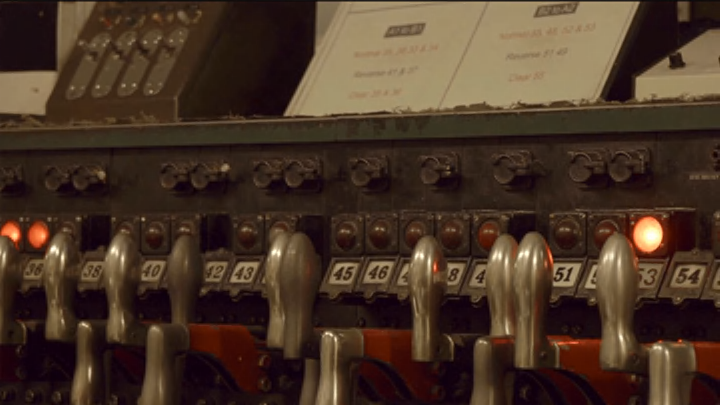New York City’s subway system—far and away the most extensive in the nation—is not exactly a model for transportation infrastructure. The city has yet to open an extension line it started planning in the 1920s. Almost all of the existing stations have structural defects. Oh, and it’s still using a signaling system that was last considered high-tech 85 years ago.
At Manhattan's West 4th Street station, trains are controlled by a 1930s interlocking machine operated by physical levers that employees have to manipulate in order to reroute tracks and send out signals. Standing on the platform waiting for your ride home, you’d never guess that every time a train enters a station, there’s an actual human standing in a back room pulling on levers. See behind-the-scenes in this video from the city’s transit authority:
The New York City subway is basically a living museum. Which is awesome, except when you need to rely on it to get you somewhere on time. Railroad companies don’t even make the parts for some of these systems anymore, so the MTA has to make its own. On a slightly brighter note, the city recently approved a plan to shell out $205.8 million to upgrade its signal system along one of its busiest subway lines, allowing the transit system to run more trains per hour. Of course, that still leaves all the other lines hanging out in the early 20th century.
[h/t: Urbanophile]
